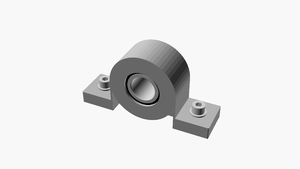Axial bearings: Difference between revisions
From
No edit summary |
No edit summary |
||
| (6 intermediate revisions by the same user not shown) | |||
| Line 1: | Line 1: | ||
{{Parts infobox | {{Parts infobox | ||
|image | |image = Pillow-block.scad.png | ||
| | |designers = [[User:Tim|Timothy Schmidt]] | ||
|date | |date = 2019 | ||
|tools | |vitamins = | ||
|parts | |materials = | ||
|techniques | |transformations = | ||
| | |lifecycles = | ||
|git | |tools = [[3D printers]] | ||
|parts = | |||
|techniques = | |||
|files = | |||
|git = | |||
|suppliers = | |||
}} | }} | ||
| Line 19: | Line 24: | ||
=Approaches= | =Approaches= | ||
<gallery> | <gallery> | ||
Pillow-block.scad.png|Pillow block bearing | Pillow-block.scad.png|Pillow block bearing | ||
Bearing block prototype.png|Bearing frame prototype | |||
</gallery> | </gallery> | ||
Latest revision as of 06:04, 23 September 2021
Introduction
A pillow block bearing (or plummer block) is a pedestal used to provide support for a rotating shaft with the help of compatible bearings & various accessories. The assembly consists of a mounting block which houses a bearing. The block is mounted to a foundation and a shaft is inserted allowing the inner part of the bearing / shaft to rotate. The inside of the bearing is typically 0.001 inches (0.025 mm) larger than the shaft to ensure a tight fit. Set screws, locking collars, or set collars are commonly used to secure the shaft.
Challenges
Approaches
-
Pillow block bearing
-
Bearing frame prototype
References
- Wikipedia: Pillow block bearing
- 1" Pillow Block Bearing UCP205-16
- UCP205-16 Datasheet
- UC205-16 bearing insert datasheet


